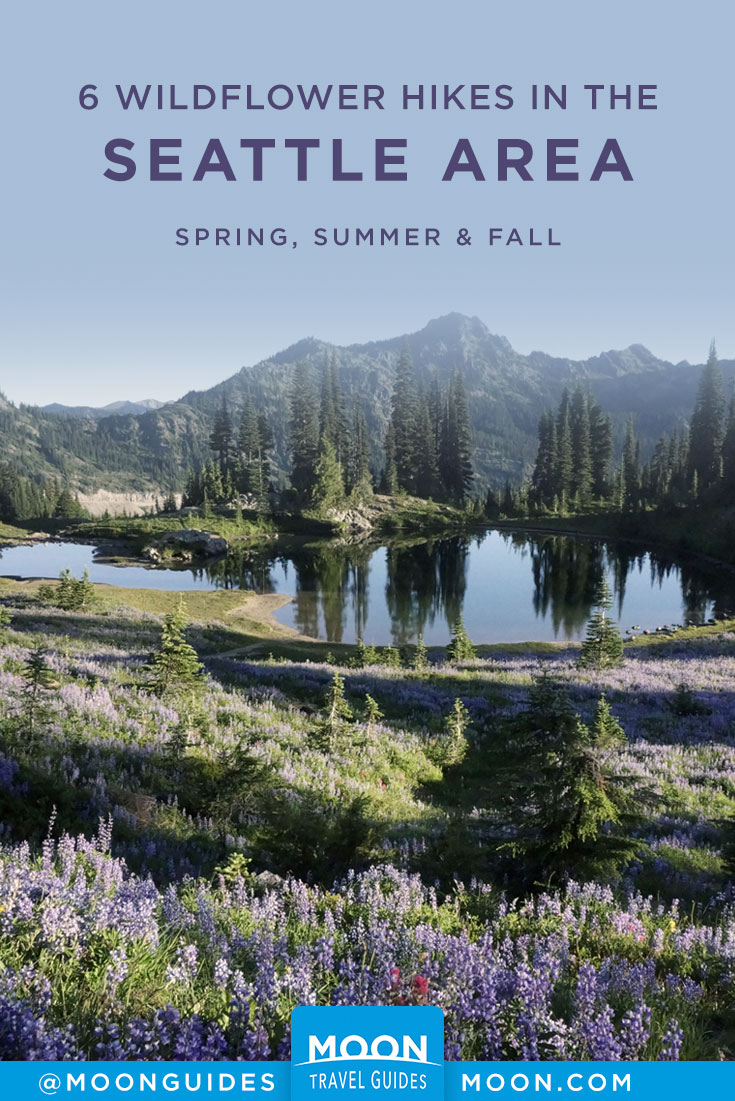Six Great Hikes to See Washington Wildflowers Near Seattle
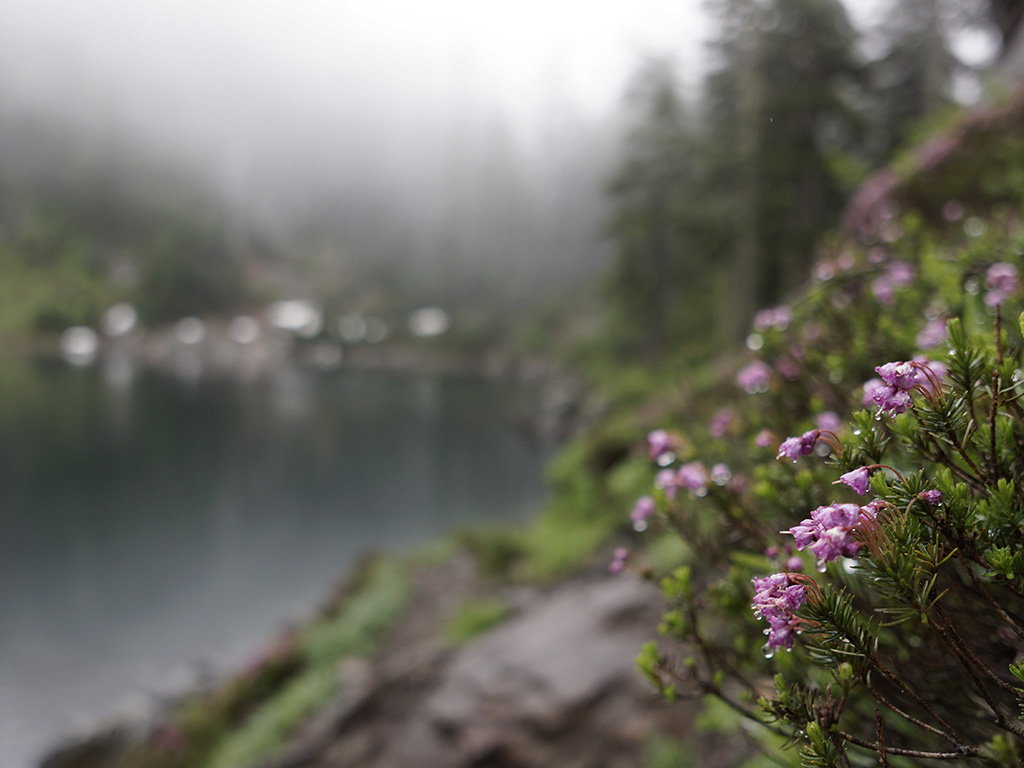
Wildflowers are a vibrant treat in Washington’s spring and summer seasons. Their breezy color palettes light up our hiking landscapes, immerse us in the present moment, and send a signal—after what can feel like a long, wet, winter season—that sunny, summery weather is on its way.
In general, wildflower season in Washington stretches from early spring to early fall. While tiny, bell-like Indian plum springs up in March in the Western Washington lowlands, technicolor fields of wildflowers in the cooler, higher elevation meadows of Mount Rainier National Park will typically wait until July to wake up.
Finding colorful wildflowers can feel like throwing a dart at a moving target—distinct peak times vary from year to year based on weather and precipitation patterns. To narrow down the best timeframe for a wildflower trek, call a local ranger station, check online trip reports from Washington Trails Association, visit Mount Rainier National Park’s wildflower webpage, and explore hiker forums and social media sites like Instagram. Wildflowers of the Pacific Northwest, by Turner and Gustafson, and the University of Washington’s Herbarium website are helpful tools for learning about and identifying wildflowers. If you’re stuck, call the Plant Answer Line at the University of Washington’s Elisabeth C. Miller Library (206-UW-PLANT, hortlib@uw.edu).
Newsletter Signup
By clicking ‘Sign Up,’ I acknowledge that I have read and agree to Hachette Book Group’s Privacy Policy and Terms of Use
These hikes combine wildflowers with striking scenery:
- Denny Creek-Melakwa Lake, located near Snoqualmie Pass, is best known for the natural waterslide 1.2 miles into the hike. Further afield, however, thistle, red columbine, bluebell, and crinkly white thimbleberry flowers sprinkle the valley below Hemlock Pass, with pretty Pink Mountain Heather framing Melakwa Lake (8.8 miles roundtrip, 2,625 feet elevation gain, Snoqualmie Ranger District-North Bend)
- Iron Bear-Teanaway Ridge, located east of the Cascade crest, is a great option for spring wildflower viewing and an escape from rainy weather in Western Washington. Enjoy spotting balsamroot, scarlet gilia, snowbrush, and bitterroot in mid-late May, along with views of Mount Rainier and the Stuart Range. (6.5 miles roundtrip, 1750 feet elevation gain, Cle Elum Ranger District)
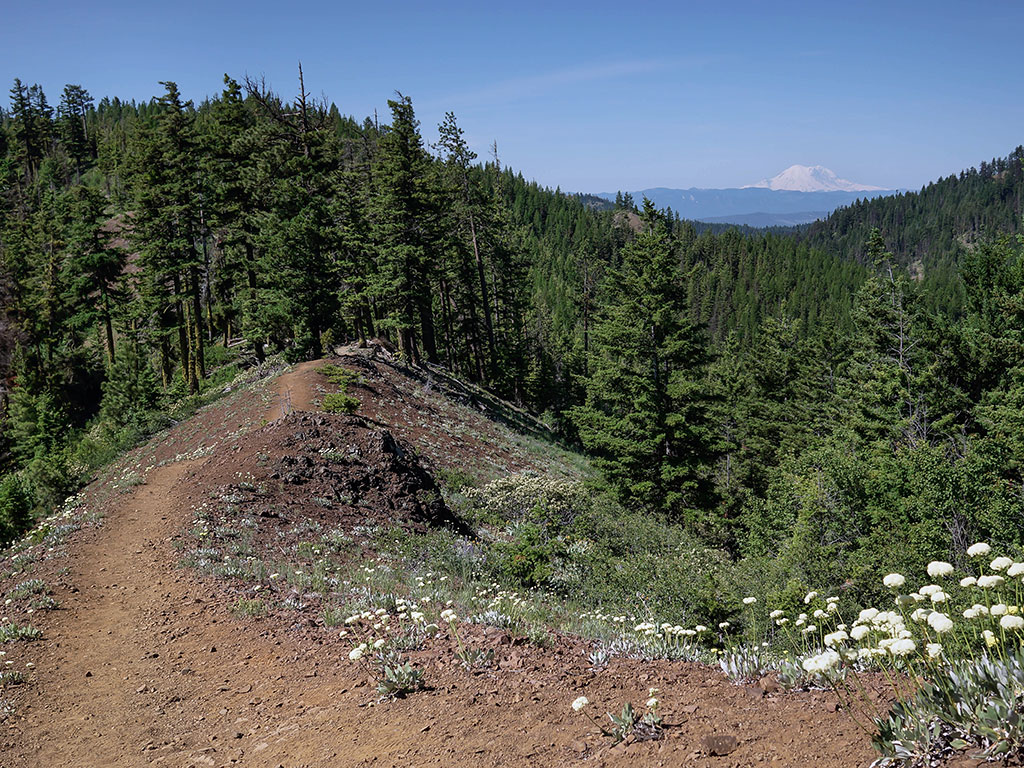
- Mount Townsend, located west of Quilcene, is a treat in late spring when delicate pink rhododendron cocoon the first 1.2 miles of the trail. Paired with fantastic views of the Olympics and Puget Sound, this is a stunning two-for-one trail. (8.8 miles roundtrip, 3000 feet elevation gain, Hood Canal Ranger District-Quilcene)
- Tipsoo Lake-Naches Peak Loop is a family-friendly hike at Chinook Pass featuring wildflowers, picturesque tarns, and Mount Rainier views. Purple lupine is the star of the show in peak season—blanketing the hillsides near Tipsoo Lake and Naches Peak. Arrive early or late in the day to avoid summer crowds. (3.6-4.1 miles roundtrip, 700 feet elevation gain, Mount Rainier National Park-White River Ranger Station)
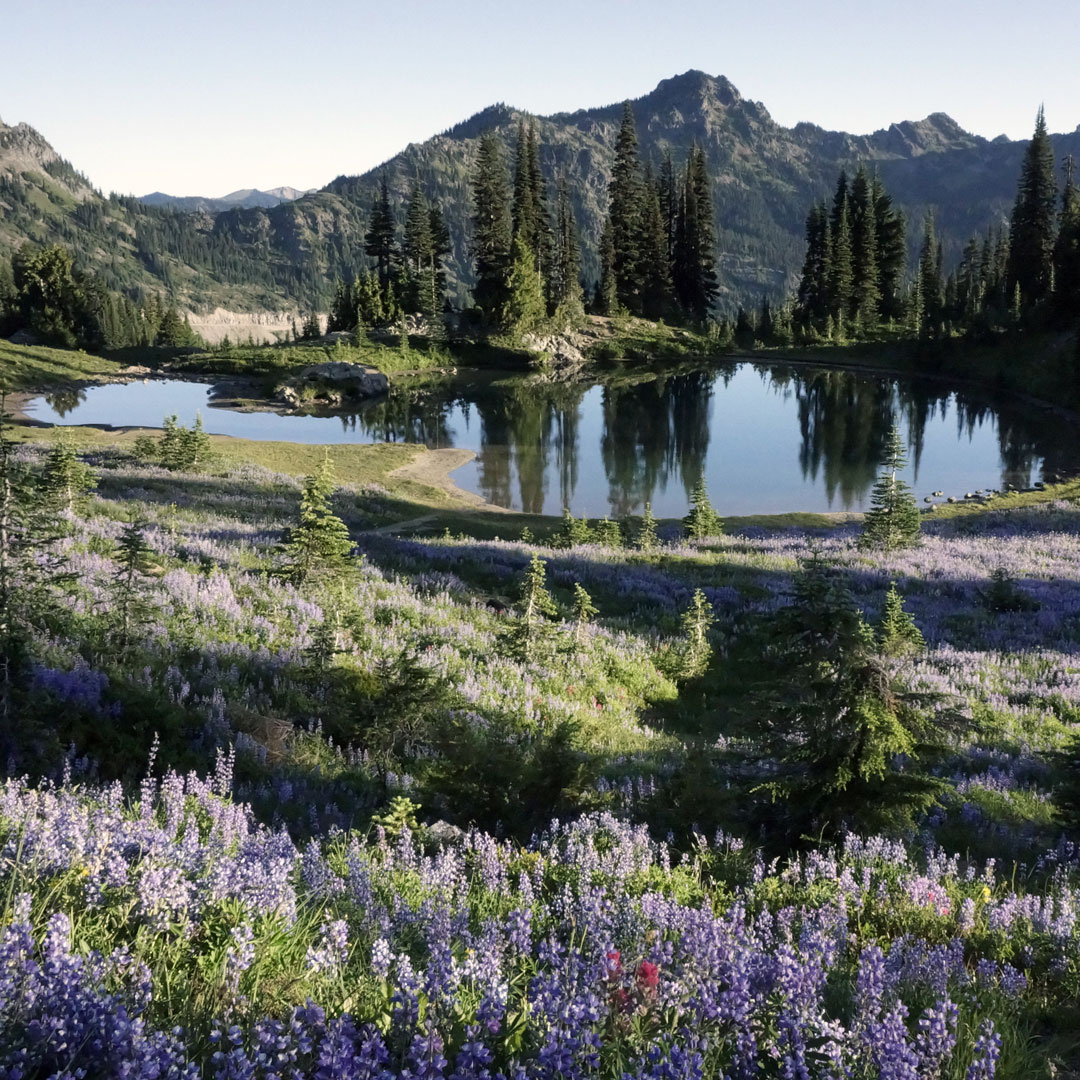
- Tolmie Peak Lookout, located in the northwestern corner of Mount Rainier National Park, boasts fanciful beargrass, pockets of penstemon and paintbrush, and white rhododendron. A commanding view of Mount Rainier from the lookout and lupine-bordered Eunice Lake round out the views. (6.0 miles roundtrip, 1500 feet elevation gain, Mount Rainier National Park-Carbon River Ranger Station)
- Upper Big Quilcene-Marmot Pass is a wonderful hike on the Olympic Peninsula for viewing plant life, wildflowers, and the Olympics. Moss-lined paths and huckleberries spring from the wet, dense forest, while fireweed, Scotch bluebell, and stonecrop color the higher-elevation slopes. (11 miles roundtrip, 3400 feet elevation gain, Hood Canal Ranger District-Quilcene)
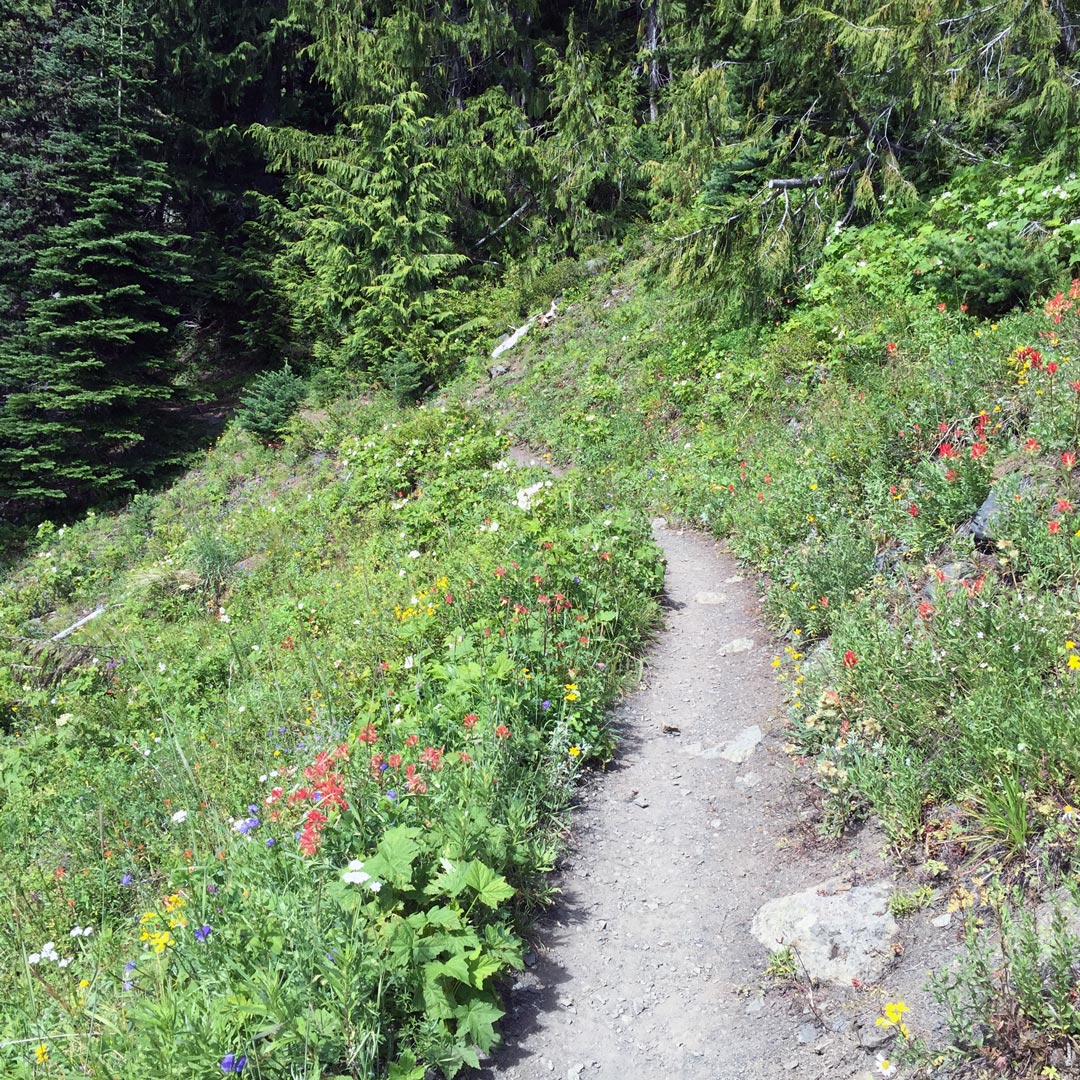
While you’re out enjoying your hike, help protect wildflowers by sticking to trails and durable surfaces, like rocks and packed-down dirt. Take plenty of photos, but leave the wildflowers as you find them—please don’t pick them.
Seattle’s best-kept secret is the beauty of its natural surroundings. Explore the dynamic topography waiting just outside your door with Moon 75 Great Hikes Seattle.
Newsletter Signup
By clicking ‘Sign Up,’ I acknowledge that I have read and agree to Hachette Book Group’s Privacy Policy and Terms of Use
Pin it for Later
